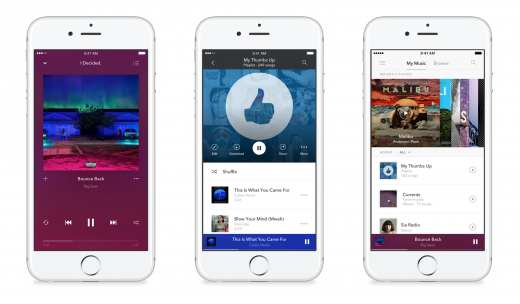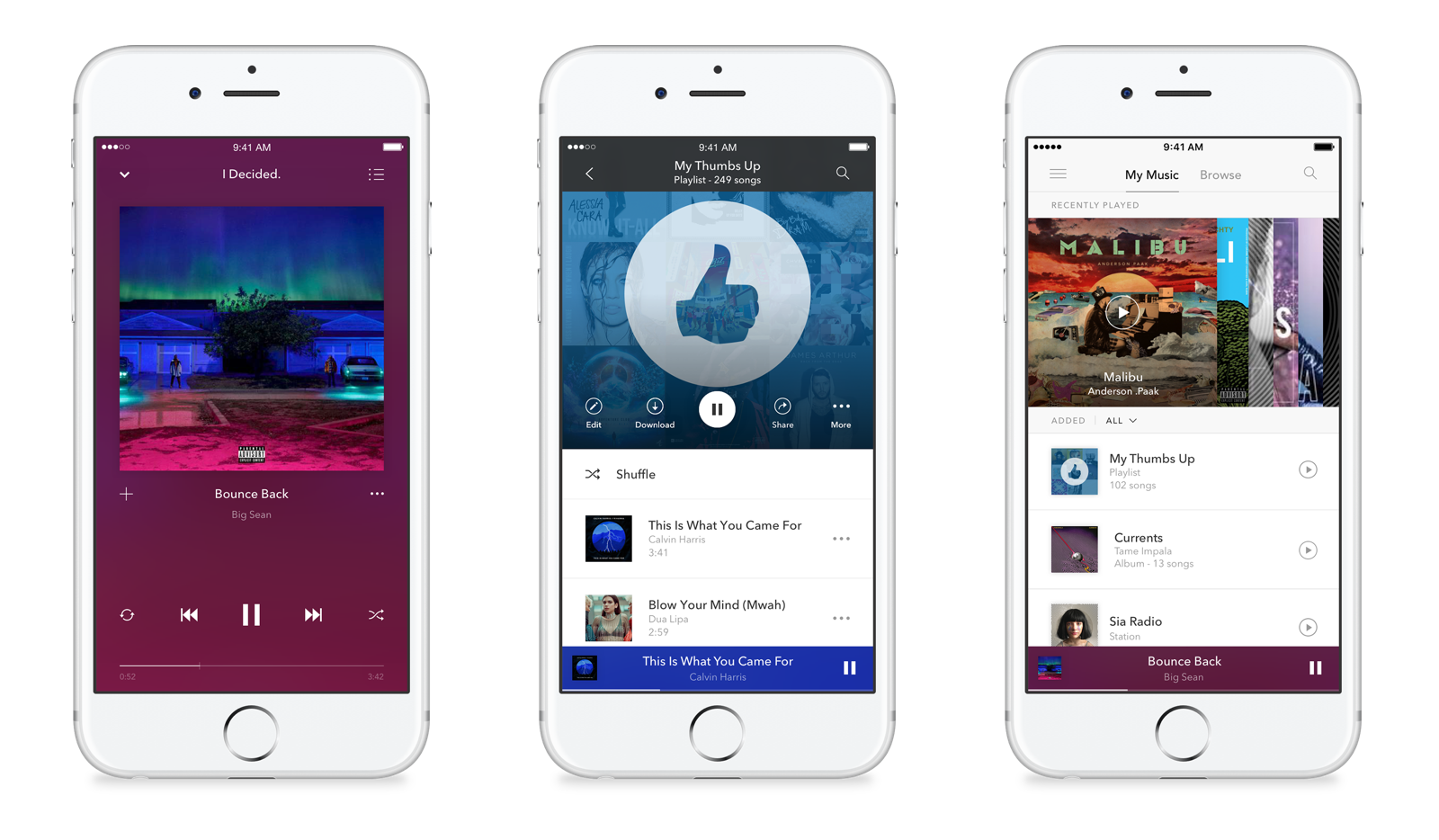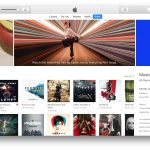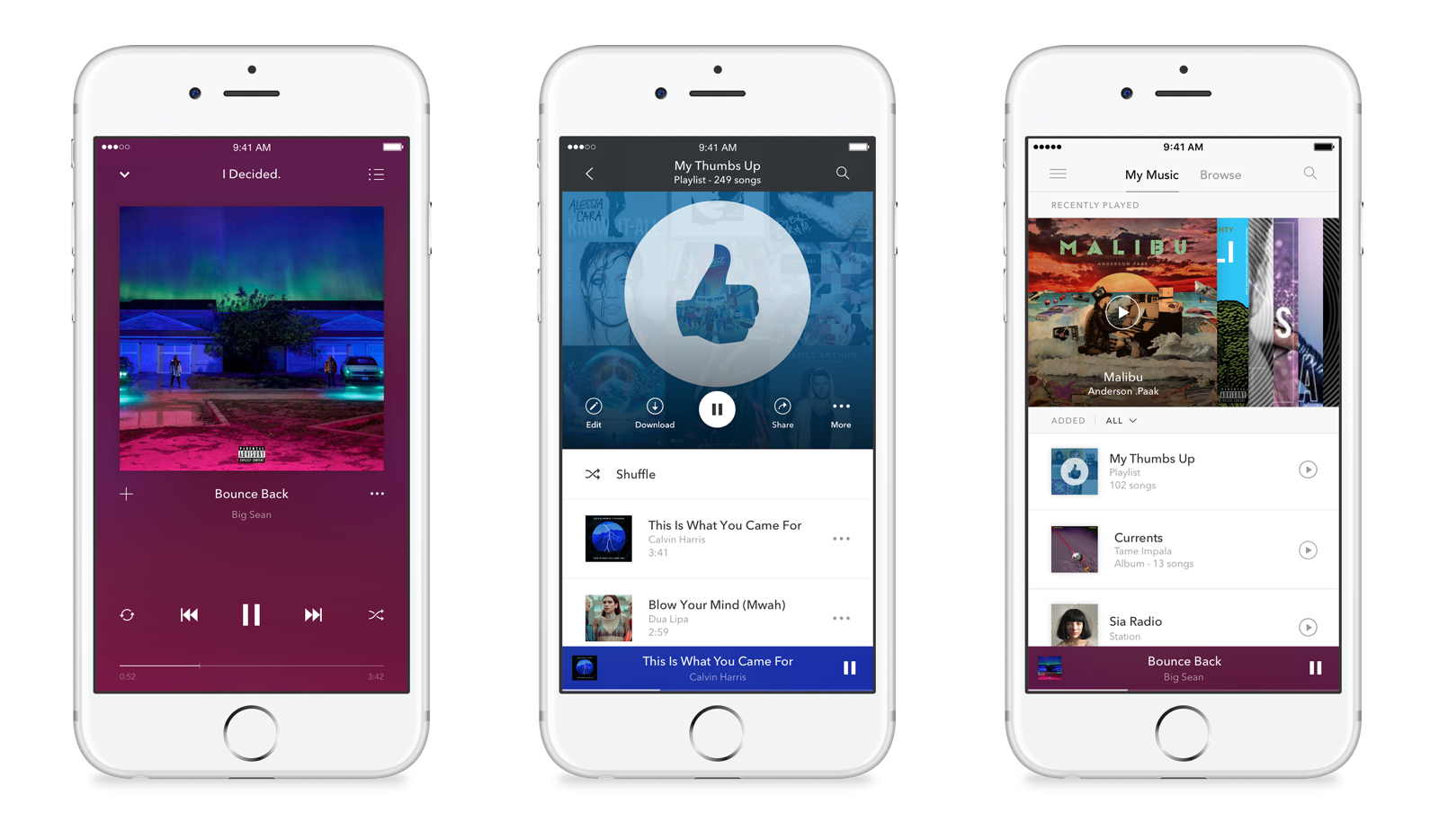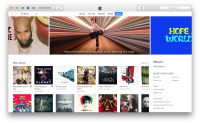Pandora’s new on-demand music service is beautiful, but is that enough?
Rdio wasn’t the first streaming-music service I used, but it remains the one that I’ve used the longest. A combination of smart discovery, social features and excellent design (something most music services still can’t nail) made it a great option, but it couldn’t attract subscribers the way Spotify could. Eventually, Rdio shut down — but at the same time, Pandora acquired its assets, which the company used to build Pandora Premium. Today that service is finally ready to launch.
As announced in December, Pandora Premium is a combination of traditional radio stations as well as an on-demand competitor to Spotify and Apple Music (with the same $10-per-month price, to boot). Both of those rival services have been rapidly gaining subscribers as of late. The question Pandora has to answer is not only whether Premium can compete but also whether there’s enough of an audience for it in an already crowded market.
Pandora believes its massive user base (80 million per month) gives it a pretty big advantage. Currently, only a small percentage of those pay for the $5-per-month Pandora Plus service (which removes ads and lets you skip more tracks and repeat songs), but the company doesn’t see that as a problem. Instead, it views the Premium service as another option but not necessarily the best one for all users. If you’re happy with the free, ad-supported tier, Pandora isn’t going to stress about converting you to a paid plan, as it thinks it’s figured out how to monetize the free tier — something it says other companies haven’t done.
For those of us who can’t stand ads and need an on-demand service though, how does Pandora Premium stack up? Chris Becherer, Pandora’s VP of product, who came over from Rdio, said that the company has identified a few places where it has an advantage over the competition. To me, the most important among those are a simple and clean design language and more data about listening habits and how songs relate to one another.
These presumed advantages show themselves in a variety of ways throughout the app. I’ve been testing Premium for the past week or so, to see if these selling points are enough to make the service a viable option. What I’ve found is that the spirit (or is it ghost?) of Rdio is very much alive in Pandora Premium — for better and worse.
Becherer said that nearly every single Rdio designer came over to Pandora to build the new service, and it shows. If you’ve ever used the Rdio mobile app, there’s a lot that feels familiar here. It’s clean and minimal but at the same time doesn’t skimp on the sort of features you’d expect to see in an on-demand music app. The top of the home screen is a lovely carousel of everything you’ve recently played. Right below that is a list of everything in your collection, sorted by most-recent additions. It’s a smart design that lets you quickly jump into whatever music you’ve been listening to lately.

Browsing your full music collection isn’t quite as elegant, unfortunately. Tapping an arrow below the “recently played” carousel will pull up a menu to let you browse your music library by artist, album, playlist, song or station. Usually I browse my collection by album, but there’s no way to re-sort by alphabetical order here: You’re stuck browsing by what you’ve added most recently. Fortunately, you can browse artists in alphabetical order; tapping one shows you all albums from the selection you’ve saved.
When you’re looking at a particular album or station, there’s a big ol’ “play” button sitting dead center, along with options to add it to your library, download it to your phone or share it. The now ubiquitous three-dot “more” menu lets you add a full album to a playlist and go straight to the artist’s other works. Each song also has a similar overflow menu that includes the option to start one of Pandora’s classic radio stations based on the song’s characteristics. Again, it’s everything you’d expect, but it’s clean, simple and straightforward.

That extends to the “now playing” screen as well. Large album art makes up the top half of the display, and the background color changes based on the dominant color found in that art. It’s not anything that changes how you use the app, but it’s fun to pop it open and always be greeted by something particular to the song or album you’re playing. If the song isn’t already in your library, there’s a “plus” button right next to the title so you can quickly add it.
Swiping up from the bottom reveals what you might think is a queue, but instead it just shows everything playing from the current album or playlist, with no way to add or reorder things as you’re listening. (Radio stations don’t show upcoming songs, so swiping up instead shows details on the track and the station settings.) Unfortunately, there’s no queue in the app yet, so you can’t just start adding songs on the fly. And while Pandora said Premium would include AutoPlay, a fantastic Rdio feature that would automatically start playing music the app thinks you’d like, it’s not ready yet.
For the most part, Pandora did a great job designing the new service. But that’s only one part of the equation — there’s also the challenge of music discovery. The company believes that’s one of its strengths, given everything it’s learned about listening habits and how songs relate to one another. Pandora says that since its original launch, its users have hit the thumbs-up or thumbs-down buttons a whopping 75 billion times — that’s a lot of data on what different users like and don’t like. Pandora combines that with data from the music genome project, which analyzes songs based on 450 different attributes to find sonic matches. Based on these two sources, the company believes it can better serve up music that users will want to hear.
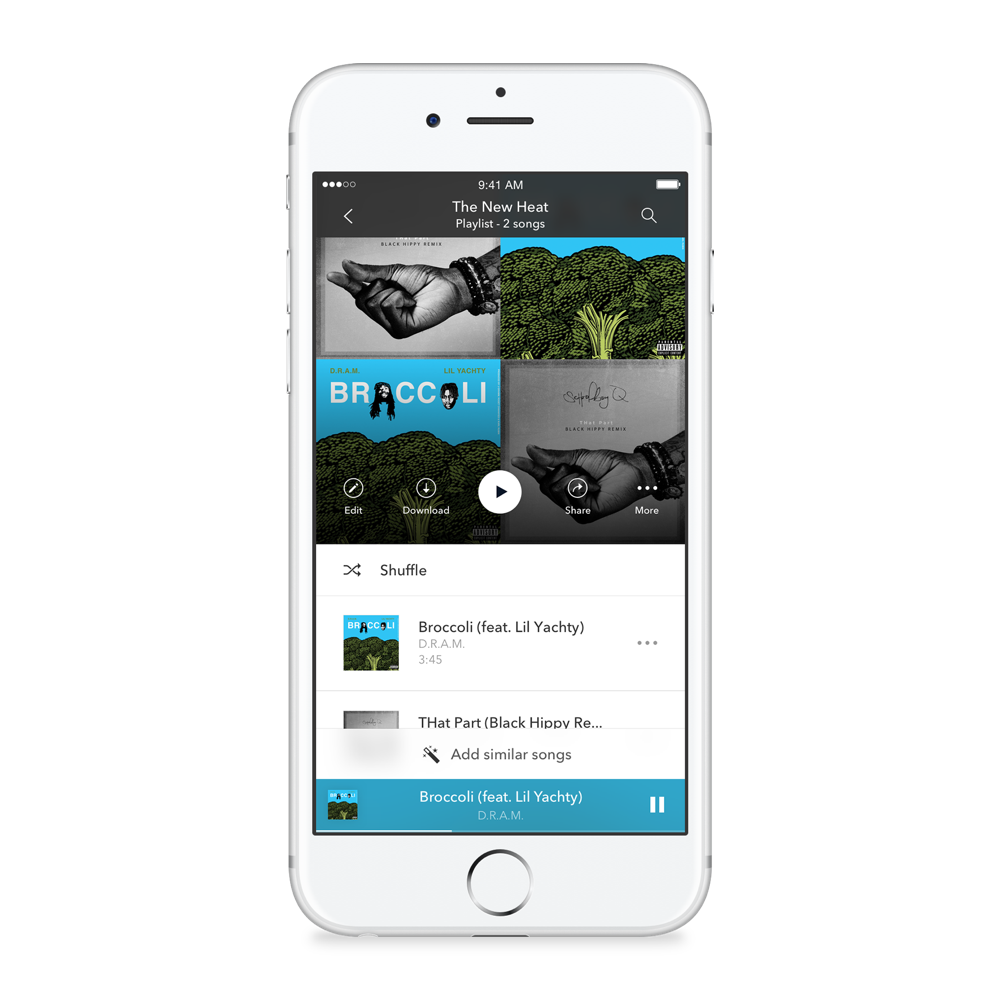
In practice, this data gets used in Pandora Premium in a number of ways. One of the service’s most intriguing new features is the ability to have Pandora analyze a playlist you’ve created and automatically add more songs it thinks will match the vibe you’re after. Once you’ve added a handful of songs, a button pops up at the bottom of the playlist imploring you to add similar songs.
Tapping that will add between three and seven more tracks that have similar characteristics but are also personalized to your taste. Becherer said that two different users who had the same five songs on their playlist would get different results when tapping the “add similar songs” button, because it customizes those selections based on your entire listening history.
In my testing, this feature worked, but it wasn’t quite the magical experience I was hoping for. Too often, I’d see more songs from the three or four artists that I initially added to the playlist start popping up, which isn’t great for discovering new music or diversifying the track list. The quality of this feature will probably depend on how obscure the songs you add to your playlist are — stuff that’s played more often seems like it will naturally have more links to other music. Additionally, it’s the kind of thing that should get smarter the more you use Pandora. Historically, I have used the service sporadically, so it doesn’t know that much about my tastes yet. After a few weeks or months, it might get better at finding things I want to hear.
Pandora uses all of your thumbs-up and thumbs-down votes over the years in a few other interesting ways (provided you’ve used the service before, of course). For starters, there’s an auto-generated thumbs-up playlist that pulls in every song you’ve approved of on Pandora Radio over the years. I had 66 songs in mine, which is a nice collection to start with, and heavy Pandora users could have many more. And if you’re kicking back, listening to a Pandora station and give more than four songs on it a thumbs-up, the app auto generates a new playlist for you, specifically grouping together all the songs you’ve liked from that station. It’s a good way to keep track of new things you hear that you want to quickly get back to.
The “browse” section of the app, which pulls together new releases, genre stations, recommended artists and so forth, is also customized to your listening history. Instead of just showing a generic “new releases” panel, you’ll see four albums each week tailored to your tastes. Tapping into that shows more recommendations, and you can keep scrolling down to get a more comprehensive list. This is an area where the app’s relentless drive for simplicity removes some of the options you’ll find in other services, as you can’t pick a certain genre and dive into all the new releases.

The “browse” area also recommends specific artists and genres based on your history, and then you can scroll down to find all stations across genres or moods and activities (like working out, driving, winding down and so forth). It’s worth noting that Pandora doesn’t curate playlists — almost everything in “browse” aside from new releases points you to stations. That makes sense, given Pandora’s history, but if you’re looking for playlists that you can scan through like on Spotify and Apple Music, you’re out of luck. These stations are more like what Google Play Music did when it purchased Songza, giving you a bunch of options based on genre or activity.
All told, Pandora Premium seems to be a strong first attempt at on-demand streaming, but that doesn’t mean it’s perfect. As good as the app’s design is, there are some UI quirks. Swiping right doesn’t go back, like almost every other app does. Instead, it pulls out a left-side menu with some lesser-used features like your profile. One of those menu items brings you right back home to the “my music” screen, but if you want to move back a step or two, you need to hit the back arrow in the top right of the screen.
Becherer said this was because Pandora wanted users to have immediate access to the menu option to return to “my music” rather than having to hit the back arrow repeatedly, which makes sense at least. When you open search, the last term you put in is still in the box, so you have to clear it out before typing. Quirks like this aren’t the end of the world, but they did bug me as I used the app.
More concerning is the lack of gapless playback. That’s right, If you’re listening to a live album or a recording that seamlessly moves from one track to the next, there are extremely brief breaks between tracks. It’s been years since this was something I had to think about, and I’m inclined to say it’s a dealbreaker for me.
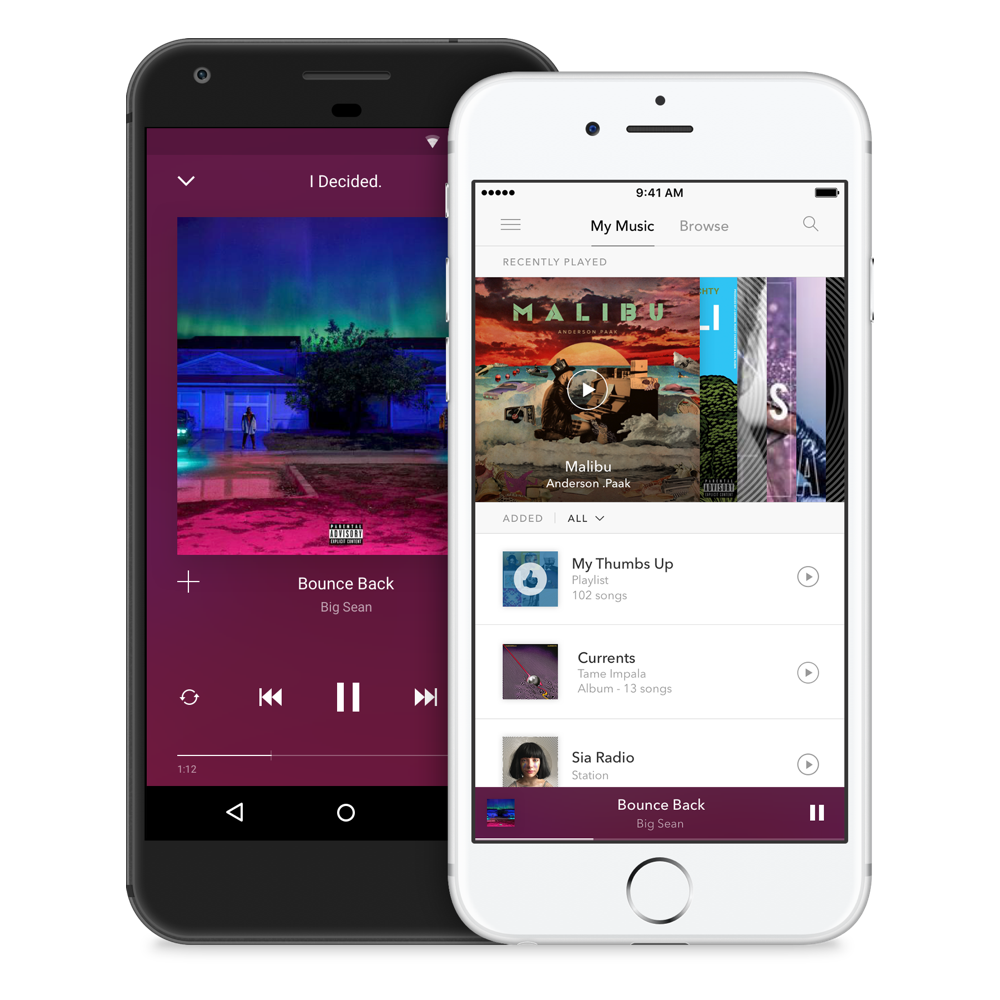
Pandora’s history as a radio-streaming service also means there will be some music-licensing issues. Some albums and songs aren’t available for on-demand play; they can only be used to start a radio station. Nearly as frustrating are the albums you can listen to in full but can’t download for offline playback. The albums that presented these issues are generally mainstream, popular selections that are fully available on other streaming services. I’m hoping that Pandora gets this sorted out quickly, but given the complexities of music-licensing agreements I’m not holding my breath.
Last, there’s no web or desktop app at launch. Becherer says that 85 percent of all Pandora listening is in its iOS and Android apps, so the company can get away with not having one right away. But it’s still something I’d like to see soon. As for how the launch will work, the Premium service will roll out slowly over the next month to existing Pandora users — and Pandora Plus subscribers will be able to try the Premium experience for free for six months.
Pandora Premium may have some version-one issues, but I still had fun trying it out. There’s a lot to like, particularly if you’ve used Pandora extensively in the past or are a fan of Rdio’s design sense, which is largely intact here. The problem is that most of us Rdio fans moved on long ago, and at this point I don’t think it’s worth it to uproot from whatever app you’re using to move back. That said, I’ll definitely be keeping an eye on Premium to see how it improves over time. With a little work, Rdio’s spiritual successor may win me back.
(28)

